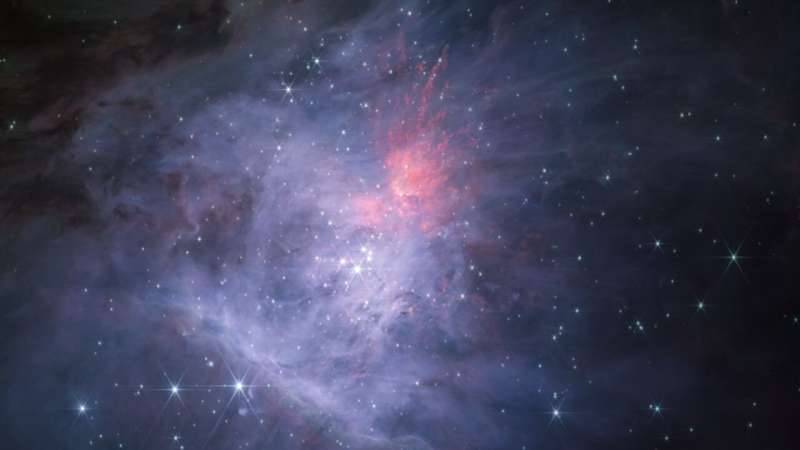
Deep within the Orion Nebula, researchers are one step closer to understanding how Jupiter-mass binary objects (JuMBOs) form—a longstanding mystery in astrophysics
In a recent study, Dr. Richard Parker and undergraduate student Jessica Diamond explore a new theory on the formation of these intriguing objects. Their article has been accepted for publication in The Astrophysical Journal and is currently available on the arXiv preprint server.
The recent discovery of JuMBOs in the Orion Nebula Cluster by the James Webb Space Telescope has intensified debate around the origin of free-floating, planetary-mass objects in star-forming regions.
Stars typically form from the gravitational collapse of gas clouds in space, with planets then forming from a disk of gas and dust surrounding the star. JuMBOs, however, are planetary-mass objects orbiting each other in a binary system. Conventional theories of how planets form do not predict that they would form in binary systems, and the JuMBO masses are too small for them to have formed in the same way as stars.
So how did they come into existence?
Dr. Parker and Diamond propose a theory involving “photoerosion.” According to their research, JuMBOs initially form in a manner similar to stars, but their growth is inhibited by radiation from nearby massive OB stars. These OB stars emit intense blasts of radiation, which strip away hydrogen gas from the outer layers of the forming JuMBOs—a process known as photoerosion.
Dr. Parker and Diamond’s work revisits an old theory for forming planetary-mass objects near very massive stars, but updates it in light of more recent observations that suggest most stars form as binary systems. Photoerosion provides an explanation for JuMBO formation, proposing that radiation from massive stars halts the growth of stellar binaries early.
While this adds insight into the formation of free-floating planetary masses, the true origin and nature of JuMBOs are still under investigation. Ongoing research and future observations will be crucial in confirming their existence and understanding their place in the cosmos.
More information:
Jessica L. Diamond et al, Formation of Jupiter-Mass Binary Objects through photoerosion of fragmenting cores, arXiv (2024). DOI: 10.48550/arxiv.2410.09159
Journal information:
Astrophysical Journal
,
arXiv
Provided by
University of Sheffield
Jupiter-mass binary objects hidden in Orion Nebula: Study explores new theory on their formation (2024, November 11)
retrieved 12 November 2024
from https://phys.org/news/2024-11-jupiter-mass-binary-hidden-orion.html
part may be reproduced without the written permission. The content is provided for information purposes only.